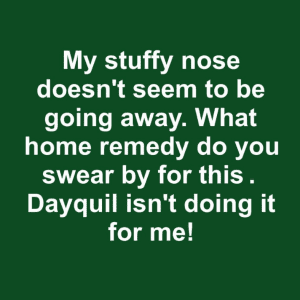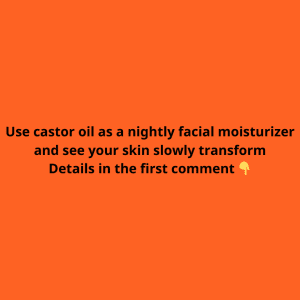Sebaceous filaments are a natural and essential part of your skin’s ecosystem, often misunderstood and confused with blackheads. While they might appear as small dark spots on your skin, particularly around your nose and forehead, their role is crucial in keeping your skin hydrated and healthy. In this article, we’ll explore what sebaceous filaments are, why they matter, and how you can manage their appearance to maintain healthy skin.
What Are Sebaceous Filaments?

Sebaceous filaments are thin, thread-like structures that form in your sebaceous glands, which are responsible for producing oil (sebum). These filaments serve the purpose of moving sebum from the oil glands to the surface of your skin, where it helps to keep your skin hydrated and protected. Sebaceous filaments are normal, and everyone has them, though they can sometimes become more noticeable depending on factors like age, skin care habits, and hair follicle thickness.
Sebaceous Filaments vs. Blackheads: What’s the Difference?
It’s easy to confuse sebaceous filaments with blackheads, but they are distinctly different. Blackheads are a type of acne caused by a buildup of oil and dead skin cells that clog the pores. They appear as raised, dark bumps that occur when the clogged material is exposed to air and oxidizes, turning black.
Sebaceous filaments, on the other hand, are not a type of acne. They look like small, flat, gray, yellow, or light brown spots and are generally less pronounced than blackheads. Unlike blackheads, sebaceous filaments allow oil to move freely through the pores without clogging them. While they may appear similar at first glance, sebaceous filaments are a normal part of your skin’s function, and they won’t disappear like blackheads after squeezing or treatment.
Why Do Sebaceous Filaments Become More Noticeable?
Several factors can cause sebaceous filaments to become more noticeable:
- Age: As you hit puberty, your sebaceous glands become more active, producing more oil. This increased oil production can make sebaceous filaments more visible. As you age, particularly into your 40s and 50s, your skin may loosen, and your pores may enlarge, further highlighting the filaments.
- Skin Care Habits: Over-washing or over-exposing your skin to the sun can lead to dryness. When your skin becomes too dry, your sebaceous glands compensate by producing more oil, which can make sebaceous filaments stand out more.
- Thicker Hair Follicles: If you have naturally thick hair follicles, your sebaceous filaments may be more prominent, especially around the nose and forehead, where oil glands are more active.
Managing Sebaceous Filaments: What You Can Do
While sebaceous filaments are normal and healthy, some people may find them aesthetically unappealing. Here are a few ways to minimize their appearance and manage oily skin effectively:
Exfoliation
Exfoliating your skin regularly can help remove dead skin cells and reduce the appearance of sebaceous filaments. Use a gentle exfoliating scrub or a product with salicylic acid to clean out your pores and prevent them from looking enlarged. Be careful not to over-exfoliate, as this can dry out your skin and cause your oil glands to go into overdrive.
Salicylic Acid
Salicylic acid is a common ingredient in acne treatments, but it can also help with sebaceous filaments. It works by breaking down the top layer of skin, allowing oil to flow more freely and preventing buildup in your pores. You can find salicylic acid in many over-the-counter facial cleansers and toners.

Retinoids
Retinoids, which are derivatives of vitamin A, can also help reduce the appearance of sebaceous filaments by promoting faster skin cell turnover. This process helps prevent oil from clogging your pores. Products like Retin-A®, Differin®, or Tazorac® can be effective, but they may cause irritation if used too frequently. Start by using them every other day and pairing them with a moisturizer to prevent dryness and peeling.
Why You Shouldn’t Squeeze Sebaceous Filaments
It can be tempting to squeeze sebaceous filaments in an attempt to remove them, but this isn’t recommended. While you may squeeze out a small amount of oil or waxy material, the filament will refill within a month, as it’s part of your skin’s natural oil production system. Squeezing can also damage your skin, causing irritation or even scarring, especially if your nails are sharp or you apply too much pressure. Instead of squeezing, focus on maintaining a good skin care routine to minimize their appearance.
Do Pore Strips Work on Sebaceous Filaments?
Pore strips can remove sebaceous filaments, but this isn’t always a good thing. These strips are designed to pull out material from your pores, which can include sebaceous filaments, but removing them may disrupt your skin’s oil balance. Without sebaceous filaments, your skin may dry out more easily, leading to increased oil production as your skin attempts to rehydrate. In some cases, this can lead to breakouts or worsen acne. Use pore strips sparingly and opt for gentler methods like exfoliation or salicylic acid to manage filaments.
How to Prevent Sebaceous Filaments from Becoming More Noticeable

While you can’t eliminate sebaceous filaments, you can reduce their visibility by following a consistent skin care routine. Here are some tips to help:
- Wash Your Face Daily: Clean your skin twice a day with a gentle, non-irritating cleanser to remove excess oil and dirt.
- Moisturize Regularly: Even if you have oily skin, using a non-comedogenic moisturizer can help balance your skin’s oil production.
- Use Oil-Free or Non-Comedogenic Products: Choose makeup and skin care products that won’t clog your pores.
- Avoid Over-Washing: Washing your face too often can strip your skin of its natural oils, causing your sebaceous glands to produce even more oil.
- Don’t Touch Your Face: Your hands can transfer bacteria and oil to your skin, potentially clogging your pores.
Conclusion: Embrace and Manage Sebaceous Filaments
Sebaceous filaments are a natural and necessary part of your skin. They play a vital role in keeping your skin hydrated and healthy by moving oil to the surface. While they may become more noticeable due to factors like age, skin care habits, or thicker hair follicles, there are safe and effective ways to manage their appearance. By following a proper skin care routine, you can keep your skin looking healthy without damaging it by squeezing or over-exfoliating. Remember, sebaceous filaments are not harmful, so it’s all about balance and finding what works best for your skin.


